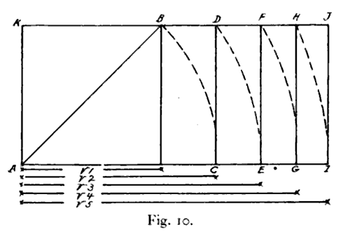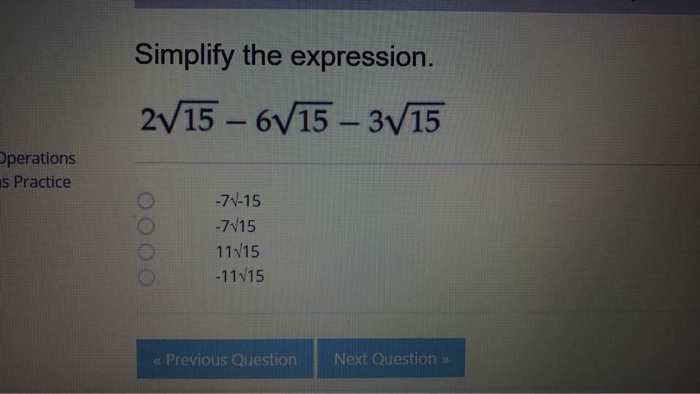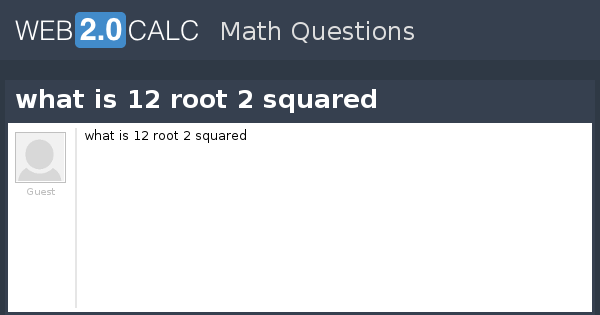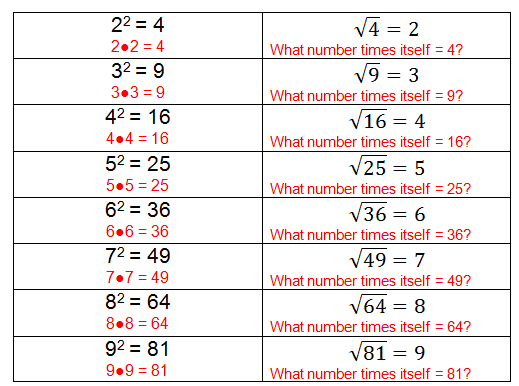Topic 2 square rooted: The concept of "2 square rooted" unveils the fascinating world of √2, an irrational number with profound significance in mathematics and beyond. Discover its unique properties, historical importance, and practical applications that continue to intrigue and inspire both students and professionals in various fields.
Table of Content
- The Square Root of 2
- Introduction to the Square Root of 2
- Mathematical Definition and Notation
- Historical Background and Significance
- Properties of the Square Root of 2
- Geometric Interpretation and Visualization
- Calculation Methods for √2
- Approximation Techniques
- Decimal Expansion and Continued Fractions
- Applications in Mathematics
- Applications in Science and Engineering
- The Role of √2 in Trigonometry
- Computer Algorithms Involving √2
- Famous Proofs and Theorems
- Challenges and Open Problems
- YOUTUBE:
The Square Root of 2
The square root of 2, often denoted as \( \sqrt{2} \), is a mathematical constant that is the positive solution to the equation \( x^2 = 2 \). It is an irrational number, meaning it cannot be exactly expressed as a simple fraction.
Mathematical Representation
In mathematical notation, the square root of 2 is written as:
\( \sqrt{2} \approx 1.4142135623730951 \ldots \)
Properties
- Irrationality: \( \sqrt{2} \) cannot be represented as a fraction of two integers.
- Decimal Expansion: Its decimal form is non-terminating and non-repeating.
- Historical Significance: The discovery of the irrationality of \( \sqrt{2} \) is attributed to the ancient Greeks.
Geometric Interpretation
The square root of 2 can be geometrically interpreted as the length of the diagonal of a square with side length 1. According to the Pythagorean theorem:
\( \sqrt{2} = \sqrt{1^2 + 1^2} = \sqrt{2} \)
This shows that the diagonal of a unit square is \( \sqrt{2} \).
Applications
The square root of 2 appears in various areas of mathematics, physics, and engineering. Some applications include:
- Pythagorean Theorem: Used in calculating distances in Euclidean space.
- Trigonometry: In trigonometric functions and identities.
- Computer Science: Algorithms that require precision in irrational numbers.
Calculation Methods
There are various methods to approximate \( \sqrt{2} \), including:
- Babylonian Method (Heron's Method): An iterative algorithm to find successively better approximations to the square root of a number.
- Continued Fractions: The expression of \( \sqrt{2} \) as an infinite continued fraction.
- Series Expansion: Using Taylor or other series to approximate \( \sqrt{2} \).
Conclusion
The square root of 2 is a fundamental constant in mathematics with rich historical significance and wide-ranging applications. Its unique properties continue to intrigue mathematicians and scientists.

READ MORE:
Introduction to the Square Root of 2
The square root of 2, denoted as \( \sqrt{2} \), is a fundamental mathematical constant. It is the positive solution to the equation \( x^2 = 2 \), making it the number that, when multiplied by itself, equals 2.
Here are the key aspects of the square root of 2:
- Mathematical Significance: \( \sqrt{2} \) is an irrational number, meaning it cannot be exactly expressed as a simple fraction. Its decimal representation is non-terminating and non-repeating: \( \sqrt{2} \approx 1.4142135623730951 \ldots \).
- Geometric Interpretation: In geometry, \( \sqrt{2} \) represents the length of the diagonal of a square with sides of length 1. This can be derived using the Pythagorean theorem.
- Historical Context: The discovery of the irrationality of \( \sqrt{2} \) is often attributed to the ancient Greeks, specifically the Pythagoreans. It was a significant milestone in the history of mathematics.
The importance of \( \sqrt{2} \) extends to various fields:
- Mathematics: \( \sqrt{2} \) appears in many mathematical contexts, including algebra, geometry, and trigonometry.
- Physics: This constant is used in various physical formulas and principles, such as in calculations involving right triangles and waveforms.
- Engineering: Engineers use \( \sqrt{2} \) in design and analysis, particularly in areas involving measurements and constructions.
The square root of 2 has been approximated and studied for centuries, with various methods to calculate its value, including:
- Babylonian Method: An iterative algorithm to find successively better approximations of \( \sqrt{2} \).
- Continued Fractions: Representing \( \sqrt{2} \) as an infinite continued fraction provides a way to approximate its value.
- Decimal Expansion: Modern computational tools allow for the calculation of \( \sqrt{2} \) to millions of decimal places.
In conclusion, \( \sqrt{2} \) is a vital constant with deep mathematical roots and wide-ranging applications in various scientific and engineering fields. Its discovery and properties continue to inspire and challenge mathematicians and scientists.
Mathematical Definition and Notation
The square root of 2, symbolized as \( \sqrt{2} \), is a crucial mathematical constant. It is defined as the number which, when multiplied by itself, results in 2. Mathematically, this relationship is expressed as:
\( \sqrt{2} \times \sqrt{2} = 2 \)
Alternatively, it can be written as:
\( (\sqrt{2})^2 = 2 \)
The value of \( \sqrt{2} \) is an irrational number, which means it cannot be expressed as a simple fraction and its decimal representation is infinite and non-repeating. Its approximate value is:
\( \sqrt{2} \approx 1.4142135623730951 \ldots \)
Below are some important points about the notation and definition of \( \sqrt{2} \):
- Notation: The square root of a number \( x \) is denoted as \( \sqrt{x} \). Therefore, the square root of 2 is written as \( \sqrt{2} \).
- Algebraic Expression: \( \sqrt{2} \) is the solution to the quadratic equation \( x^2 - 2 = 0 \).
- Decimal Expansion: The decimal form of \( \sqrt{2} \) is non-terminating and non-repeating, confirming its irrationality.
Here is a step-by-step breakdown of the calculation of \( \sqrt{2} \) using the Babylonian method (also known as Heron's method):
- Initial Guess: Start with an initial guess \( x_0 \). A common starting point is \( x_0 = 1 \).
- Iteration Formula: Use the formula \( x_{n+1} = \frac{1}{2} \left( x_n + \frac{2}{x_n} \right) \) to improve the guess.
- Repeat: Continue iterating until the value stabilizes to the desired precision.
Example Iteration:
| Iteration | Value |
|---|---|
| 0 | 1.0000000000 |
| 1 | 1.5000000000 |
| 2 | 1.4166666667 |
| 3 | 1.4142156863 |
| 4 | 1.4142135624 |
Using this method, one can approximate \( \sqrt{2} \) to any desired level of accuracy.
In summary, \( \sqrt{2} \) is a fundamental and intriguing number in mathematics, representing the positive root of 2, with unique properties that make it an essential constant in various mathematical and scientific contexts.
Historical Background and Significance
The square root of 2, often denoted as √2, holds a profound place in the history of mathematics and its development. Known also as the Pythagorean constant, this irrational number has intrigued mathematicians for millennia.
The discovery of √2 is traditionally attributed to the ancient Greeks, particularly the Pythagoreans, a group of philosophers and mathematicians founded by Pythagoras around 500 BCE. They stumbled upon √2 while examining the properties of isosceles right triangles. Specifically, they observed that the diagonal of a square with side length 1 is √2, leading to the realization that √2 could not be expressed as a ratio of two integers.
This discovery was significant because it challenged the Pythagorean belief that all numbers are rational. The proof of the irrationality of √2 is often attributed to Hippasus, a Pythagorean philosopher. According to legend, the discovery was so disturbing to the Pythagorean doctrine that Hippasus was supposedly exiled or even executed for revealing this mathematical truth.
Over time, the significance of √2 expanded beyond its initial geometric context. It became a pivotal example in the study of irrational numbers, which are numbers that cannot be expressed as a simple fraction. This concept is crucial in real analysis and number theory.
During the Middle Ages, √2 continued to be a subject of study in both Islamic and European mathematics. Mathematicians in the Islamic Golden Age, such as Al-Khwarizmi, contributed to the development of algebra, which provided tools for working with irrational numbers.
In modern times, √2 remains an important constant in various fields of science and engineering. It appears in the solutions to many physical problems, such as those involving wave equations and quantum mechanics. Additionally, the decimal expansion of √2, which begins with 1.414213562..., is a classic example used to illustrate the non-repeating, non-terminating nature of irrational numbers.
In conclusion, the historical significance of √2 is immense. From its ancient roots in Greek mathematics to its role in modern scientific applications, √2 continues to be a fundamental constant that enriches our understanding of the mathematical world.
Properties of the Square Root of 2
The square root of 2, often denoted as \( \sqrt{2} \), is an irrational number with several interesting properties. Below, we outline some key characteristics:
- Irrationality: The square root of 2 cannot be expressed as a simple fraction. Its decimal representation is non-terminating and non-repeating, approximately equal to 1.41421356237.
- Mathematical Representation: The square root of 2 can be expressed using exponential notation as \( 2^{0.5} \) or \( 2^{1/2} \).
- Algebraic Property: One fundamental property is \( (\sqrt{2})^2 = 2 \). This implies that the square of the square root of 2 is 2.
- Product Rule: For any two positive numbers \( a \) and \( b \), the square root of their product is the product of their square roots: \( \sqrt{a \times b} = \sqrt{a} \times \sqrt{b} \). For example, \( \sqrt{2 \times 8} = \sqrt{2} \times \sqrt{8} \).
- Division Rule: For any positive numbers \( a \) and \( b \) (where \( b \neq 0 \)), the square root of the quotient is the quotient of their square roots: \( \sqrt{\frac{a}{b}} = \frac{\sqrt{a}}{\sqrt{b}} \).
- Continued Fraction: The square root of 2 can be represented as a continued fraction: \[ \sqrt{2} = 1 + \frac{1}{2 + \frac{1}{2 + \frac{1}{2 + \dots}}} \]
- Geometric Property: In geometry, \( \sqrt{2} \) represents the length of the diagonal of a square with side length 1, as derived from the Pythagorean theorem.
- Approximation: \( \sqrt{2} \) can be approximated using iterative methods such as the Babylonian method (or Heron's method), which is a specific case of the Newton-Raphson method for finding successively better approximations to the roots (or zeroes) of a real-valued function.
The square root of 2 is a significant constant in mathematics, appearing in various contexts from algebra and geometry to advanced calculus and number theory.

Geometric Interpretation and Visualization
The square root of 2 (\(\sqrt{2}\)) can be understood geometrically through various visual methods. Here are some key interpretations:
1. Diagonal of a Square
One of the simplest geometric interpretations of \(\sqrt{2}\) is as the length of the diagonal of a square with side length 1. According to the Pythagorean theorem, if a square has sides of length 1, the diagonal length \(d\) is given by:
\[
d = \sqrt{1^2 + 1^2} = \sqrt{2}
\]
This diagonal effectively illustrates \(\sqrt{2}\) as a spatial distance.
2. Number Line Representation
On a number line, \(\sqrt{2}\) can be visualized using a right-angled triangle construction. Starting from 0, draw a line segment of length 1 along the x-axis. Then, from this point, draw a perpendicular line segment of length 1. The hypotenuse of this right-angled triangle, which stretches from the origin to the endpoint of these segments, represents \(\sqrt{2}\).
3. Geometric Construction
Another method to visualize \(\sqrt{2}\) involves geometric constructions using compass and straightedge. For example:
- Draw a unit square (each side length = 1).
- Construct the diagonal of the square.
- The length of this diagonal is \(\sqrt{2}\).
This method helps in visualizing the value in a clear and structured manner.
4. Circle and Sector
A circle with radius \(\sqrt{2}\) can also represent the value geometrically. By constructing a right triangle within the circle where one leg lies along the radius and the other is tangent to the circle, the hypotenuse (which is the radius in this case) will be \(\sqrt{2}\).
5. Decimal Expansion
The decimal expansion of \(\sqrt{2}\) is approximately 1.414213562373095... and continues infinitely without repeating. This non-terminating and non-repeating nature is a hallmark of its irrationality, and each successive digit can be interpreted as an increasingly precise measurement on a number line.
6. Polar Coordinates and Complex Plane
In the complex plane, \(\sqrt{2}\) can be expressed using polar coordinates. If we consider the point (1,1) in Cartesian coordinates, converting this to polar coordinates gives:
\[
r = \sqrt{1^2 + 1^2} = \sqrt{2}
\]
and the angle \(\theta = \frac{\pi}{4}\), so the point can be written as \( \sqrt{2} \cdot e^{i \pi / 4} \) in exponential form.
7. Visualization Using Graphs
The function \(y = \sqrt{x}\) can be graphed to visualize the value of \(\sqrt{2}\). For \(x=2\), the corresponding value on the y-axis will be \(\sqrt{2}\), showing how the square root function maps numbers geometrically.
These interpretations not only help in visualizing \(\sqrt{2}\) but also in understanding its significance in various mathematical contexts.
Calculation Methods for √2
The square root of 2 (\( \sqrt{2} \)) is an irrational number, approximately equal to 1.41421356237. Several methods can be used to calculate or approximate this value.
1. Estimation Method
- Start with a guess: Know that \( \sqrt{2} \) is between 1 and 2 because \( 1^2 = 1 \) and \( 2^2 = 4 \).
- Refine your guess: Try 1.5. Since \( 1.5^2 = 2.25 \), which is more than 2, try a lower number.
- Narrow the range: Since \( 1.4^2 = 1.96 \), which is less than 2, the guess is closer. Keep adjusting the decimal places.
- Continue until satisfied: Refine within the range (e.g., \( 1.41^2 = 1.9881 \)) to get closer to \( \sqrt{2} \).
2. Long Division Method
- Start with the closest square: Identify the largest square less than 2, which is 1 (since \( 1^2 = 1 \)). Use 1 as both divisor and quotient, and find the remainder.
- Expand the division: Place a decimal point after the quotient and bring down two zeros, making the new dividend 100.
- Double and guess: Double the divisor (making it 2) and add a blank digit to its right. Choose a digit that, when this new divisor is multiplied by it, the product is just under or equal to 100. Add this digit to the quotient and calculate the remainder.
- Repeat for precision: Continue the process, doubling the new quotient part (ignoring the decimal) and adding two zeros to the remainder each time, to get more decimal places in your answer.
3. Newton's Method (Heron's Method)
- Start with an initial guess \( x_0 \) (e.g., 1.5).
- Apply the iteration formula: \( x_{n+1} = \frac{x_n + \frac{2}{x_n}}{2} \).
- Continue iterating until \( x_n \) converges to the desired precision.
4. Continued Fractions
The continued fraction representation of \( \sqrt{2} \) is an infinite sequence that provides progressively better approximations:
\[
\sqrt{2} = 1 + \frac{1}{2 + \frac{1}{2 + \frac{1}{2 + \ldots}}}
\]
This method involves calculating terms of the sequence to approximate \( \sqrt{2} \).
Approximation Techniques
The square root of 2 (\(\sqrt{2}\)) is an irrational number, meaning it cannot be expressed exactly as a fraction. However, several methods can be used to approximate its value accurately. Here are some common techniques:
-
1. Long Division Method
This manual method involves a step-by-step process similar to long division, which can yield very accurate results:
- Start with a pair of digits (or a single digit) from the number.
- Find the largest number whose square is less than or equal to the pair.
- Subtract the square from the pair and bring down the next pair of digits.
- Double the current quotient and determine the next digit of the quotient, ensuring the product is less than the current dividend.
- Repeat the steps until the desired precision is achieved.
-
2. Newton's Method (or Heron's Method)
Newton's method is an iterative numerical technique that improves an initial guess for \(\sqrt{2}\). The formula used is:
This method rapidly converges to the accurate value of \(\sqrt{2}\).
-
3. Continued Fractions
The square root of 2 can also be represented as an infinite continued fraction:
This form provides successive approximations that become increasingly accurate.
-
4. Binary Search Method
This method involves iteratively narrowing down the range within which \(\sqrt{2}\) lies:
- Set a lower bound (e.g., 1) and an upper bound (e.g., 2).
- Compute the midpoint of the range.
- Square the midpoint and compare it to 2.
- If the square is close enough to 2, stop; otherwise, adjust the bounds based on whether the square is greater or less than 2.
- Repeat until the desired precision is achieved.
-
5. Fast Inverse Square Root
Originally used in computer graphics (e.g., in the Quake III Arena game), this algorithm provides a quick approximation for the inverse square root:
float Q_rsqrt(float number) {
long i;
float x2, y;
const float threehalfs = 1.5F;
x2 = number * 0.5F;
y = number;
i = * ( long * ) &y;
i = 0x5f3759df - ( i >> 1 );
y = * ( float * ) &i;
y = y * ( threehalfs - ( x2 * y * y ) );
return y;
}
Though designed for inverse square roots, it can be adapted for square roots with modifications.
Decimal Expansion and Continued Fractions
The square root of 2, denoted as \( \sqrt{2} \), is an irrational number, meaning it cannot be expressed as a simple fraction of two integers. Its decimal expansion is non-terminating and non-repeating:
\[ \sqrt{2} \approx 1.4142135623730950488\ldots \]
While this decimal representation is useful, another powerful way to represent \( \sqrt{2} \) is through its continued fraction expansion. A continued fraction provides a unique way to express irrational numbers as an infinite sequence of integers.
The continued fraction for \( \sqrt{2} \) is:
\[ \sqrt{2} = 1 + \frac{1}{2 + \frac{1}{2 + \frac{1}{2 + \frac{1}{2 + \ddots}}}} \]
This can be compactly written as:
\[ \sqrt{2} = [1; \overline{2}] \]
Here, the overline indicates that the pattern 2 repeats indefinitely.
To derive this continued fraction, we start with the equation:
\[ \sqrt{2} = 1 + (\sqrt{2} - 1) \]
Then we transform it into a recursive form:
\[ \sqrt{2} = 1 + \frac{1}{1 + \sqrt{2} - 1} = 1 + \frac{1}{1 + \frac{1}{\sqrt{2} + 1}} \]
This recursive relationship is then used to express \( \sqrt{2} \) as an infinite continued fraction.
Continued fractions offer an efficient way to approximate irrational numbers. Each successive term provides a closer rational approximation of \( \sqrt{2} \). For instance:
- First approximation: \[ 1 \]
- Second approximation: \[ 1 + \frac{1}{2} = \frac{3}{2} \approx 1.5 \]
- Third approximation: \[ 1 + \frac{1}{2 + \frac{1}{2}} = \frac{7}{5} = 1.4 \]
- Fourth approximation: \[ 1 + \frac{1}{2 + \frac{1}{2 + \frac{1}{2}}} = \frac{17}{12} \approx 1.41666\ldots \]
As we extend the sequence, these fractions converge to the true value of \( \sqrt{2} \).
Understanding and using continued fractions can provide deeper insights into the properties of irrational numbers and their approximations.
Applications in Mathematics
The square root of 2, denoted as \( \sqrt{2} \), has numerous applications in various mathematical fields. Here are some significant applications:
- Geometry:
In geometry, \( \sqrt{2} \) is known for its role in right triangles. According to the Pythagorean theorem, the length of the hypotenuse of a right triangle with legs of length 1 is \( \sqrt{2} \). This makes it critical in calculations involving diagonals of squares and rectangles.
The Pythagorean theorem is expressed as:
\[
a^2 + b^2 = c^2
\]
where \( a \) and \( b \) are the legs of the triangle and \( c \) is the hypotenuse. For a right triangle with \( a = 1 \) and \( b = 1 \), \( c = \sqrt{2} \). - Trigonometry:
In trigonometry, \( \sqrt{2} \) appears in the values of trigonometric functions for certain angles. For example, the sine and cosine of 45 degrees (or \( \pi/4 \) radians) are both \( 1/\sqrt{2} \) or \( \sqrt{2}/2 \).
\[
\sin\left(\frac{\pi}{4}\right) = \cos\left(\frac{\pi}{4}\right) = \frac{1}{\sqrt{2}} = \frac{\sqrt{2}}{2}
\] - Algebra:
In algebra, \( \sqrt{2} \) is important when solving quadratic equations. For example, the equation \( x^2 - 2 = 0 \) has solutions \( x = \pm \sqrt{2} \).
Solving for \( x \) in the equation \( x^2 = 2 \) gives:
\[
x = \pm \sqrt{2}
\] - Number Theory:
The square root of 2 is an irrational number, meaning it cannot be expressed as a ratio of two integers. This property is significant in number theory, particularly in the study of irrational numbers and their properties.
- Calculus:
In calculus, \( \sqrt{2} \) often appears in integrals and limits. For instance, it is used when calculating the length of a curve or the area under a curve where the integrand involves square roots.
- Computer Science:
In computer science, \( \sqrt{2} \) is used in algorithms, especially those involving graphics and geometry, such as calculating distances in Euclidean space.
For example, the distance between two points \((x_1, y_1)\) and \((x_2, y_2)\) in a plane is given by the Euclidean distance formula:
\[
d = \sqrt{(x_2 - x_1)^2 + (y_2 - y_1)^2}
\]
Applications in Science and Engineering
The square root of 2 (\(\sqrt{2}\)) plays a crucial role in various scientific and engineering applications due to its unique mathematical properties:
- Signal Processing: In digital signal processing, \(\sqrt{2}\) is used in scaling functions for wavelets.
- Electrical Engineering: It appears in the relationship between the voltage and current in an electrical circuit with resistance.
- Physics: \(\sqrt{2}\) arises in physical equations describing phenomena like electromagnetic waves and quantum mechanics.
- Material Science: It influences crystallography and the atomic structure of materials due to its geometric properties.
- Optics: In optics, \(\sqrt{2}\) relates to the diagonal of a square, influencing calculations of light paths and lens design.
These applications demonstrate how \(\sqrt{2}\) serves as a fundamental constant connecting mathematical theory to practical scientific and engineering solutions.
The Role of √2 in Trigonometry
The square root of 2 (\(\sqrt{2}\)) holds significance in trigonometry, influencing various concepts and calculations:
- Angle Measurements: \(\sqrt{2}\) appears in trigonometric functions like tangent and secant, affecting angle calculations and geometric relationships.
- Right Triangle Relationships: It is a key factor in determining side lengths and angles of right triangles, particularly those with angles involving \(\frac{\pi}{4}\) radians.
- Geometric Constructions: \(\sqrt{2}\) plays a role in constructing angles and geometric shapes accurately, contributing to the precision in trigonometric applications.
- Applications in Navigation: In navigation and surveying, \(\sqrt{2}\) assists in calculating distances and angles, ensuring accurate positioning and direction.
Understanding the role of \(\sqrt{2}\) in trigonometry is essential for applications ranging from architecture and engineering to astronomy and geographical surveying.
Computer Algorithms Involving √2
The square root of 2 (\(\sqrt{2}\)) is utilized in various computer algorithms across different fields:
- Numerical Methods: Algorithms for computing \(\sqrt{2}\) involve iterative methods like Newton's method, ensuring efficient and accurate calculations.
- Data Compression: In data compression algorithms, \(\sqrt{2}\) may appear in scaling factors or normalization constants to optimize storage and transmission efficiency.
- Graphics and Image Processing: \(\sqrt{2}\) influences algorithms for image scaling, rotation, and transformation, preserving aspect ratios and minimizing distortion.
- Machine Learning: In machine learning algorithms, \(\sqrt{2}\) can be embedded in normalization processes or feature scaling to enhance model performance and convergence.
These applications illustrate how \(\sqrt{2}\) serves as a fundamental mathematical constant in developing algorithms that power modern computational systems.

Famous Proofs and Theorems
The square root of 2 (\(\sqrt{2}\)) has been the subject of several famous proofs and theorems throughout mathematical history:
- Pythagorean Theorem: \(\sqrt{2}\) is crucial in proving the Pythagorean theorem, which relates the sides of a right triangle.
- Irrationality Proof: The proof that \(\sqrt{2}\) is irrational is a classic example, demonstrating that it cannot be expressed as a ratio of two integers.
- Geometric Constructions: Ancient mathematicians used \(\sqrt{2}\) in geometric constructions involving squares and their properties.
- Continued Fractions: \(\sqrt{2}\)'s continued fraction representation is another area where significant mathematical insights have been derived.
- Number Theory: In number theory, \(\sqrt{2}\) plays a role in Diophantine equations and the study of quadratic irrationalities.
These proofs and theorems underscore the importance of \(\sqrt{2}\) in foundational mathematics and its enduring impact on mathematical thought and discovery.
Challenges and Open Problems
Despite its mathematical richness, the square root of 2 (\(\sqrt{2}\)) presents several challenges and open problems in mathematics:
- Exact Representation: Finding an exact and efficient representation for \(\sqrt{2}\) continues to be a pursuit in number theory and computational mathematics.
- Approximation Accuracy: Improving the precision of approximations for \(\sqrt{2}\), especially in computational contexts, remains an ongoing challenge.
- Algorithmic Efficiency: Developing algorithms that efficiently compute with \(\sqrt{2}\), particularly in numerical methods and real-time applications, poses difficulties.
- Connection to Other Constants: Exploring deeper connections between \(\sqrt{2}\) and other mathematical constants, such as \(\pi\) and \(e\), is an area of active research.
- Practical Applications: Identifying novel practical applications that leverage the unique properties of \(\sqrt{2}\) remains an open problem in engineering and sciences.
Addressing these challenges not only expands our understanding of \(\sqrt{2}\) but also enhances its applications across various domains, driving forward mathematical and scientific progress.
Root 2 - Numberphile
